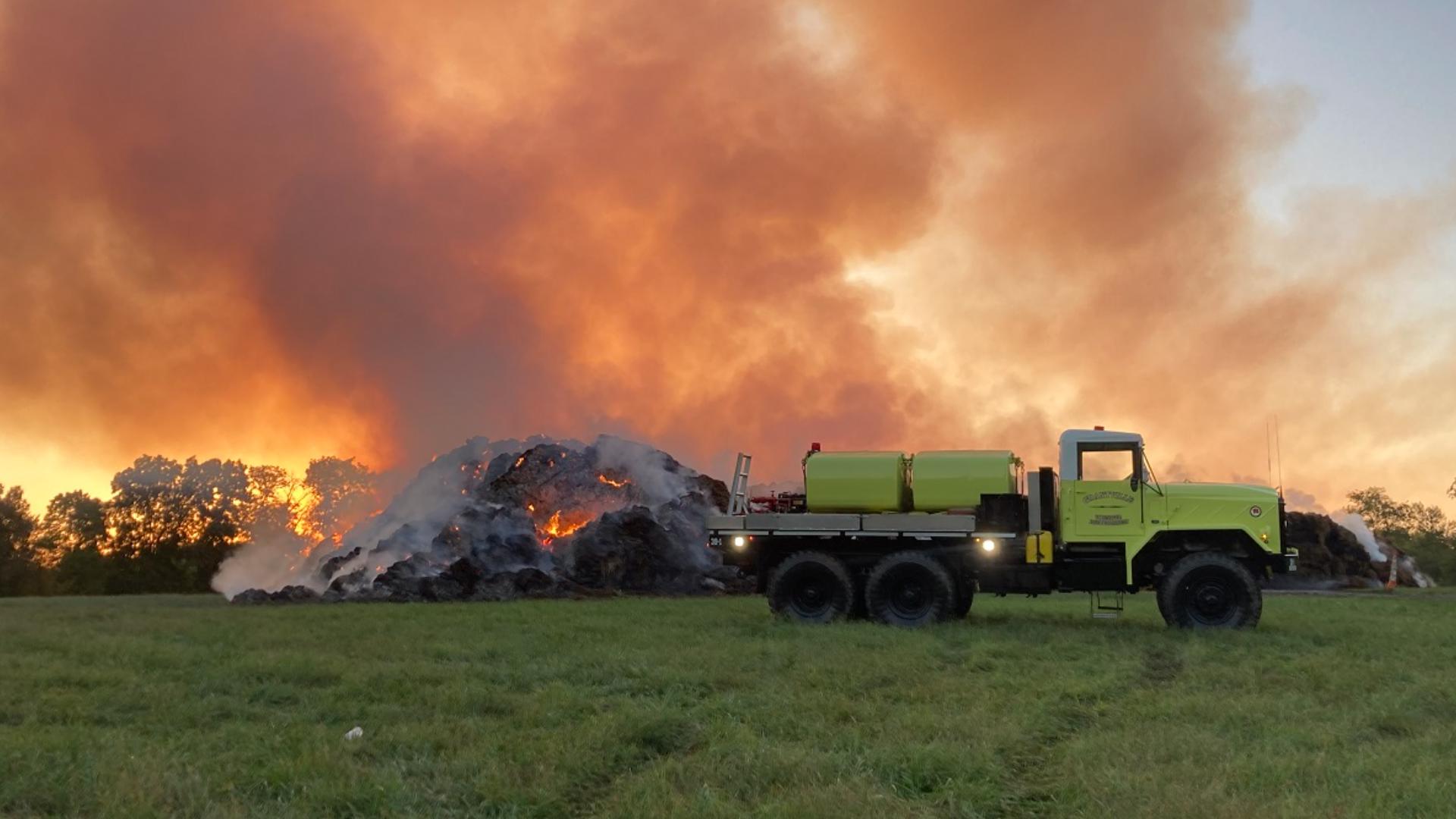DAUPHIN COUNTY, Pa. — Editor's note: The above video is from Sept. 10.
Parts of Dauphin County are seeing and smelling a smoky haze in the air today.
The smoke is from a massive hay bale fire that ignited overnight from Sept. 9 to 10.
The best way to deal with this particular fire is to let it burn itself out, firefighters say, which could take a while.
"There is no easy way to extinguish the massive pile of hay so it’ll be smoldering for days, causing a haze and odor of smoke throughout the area for coming days or weeks," Colonial Park Fire Co. #1 said on Facebook.
Those who wish to minimize their exposure to the smoke can take precautions like staying inside or wearing a mask outdoors.
The fire started at a Haldeman Farms property in East Hanover Township. Gern Haldeman Jr., who owns the farm with his brothers, says the fire blaze may have been helped along to reaching its magnitude by the way the bales were stacked.
“We left an air gap between the bales in an effort to, if the bales do get wet and we do have some hot bales, there would be air traveling through but I found last night that’s a double-edged sword,” he said. “In the event of a fire, we have a whole lot more surface area that can burn, whereas if the bales are stacked tight, it doesn’t burn nearly as fast.”
Haldeman Jr. has rounded up a group of friends who are helping him keep watch on the fire over the next several days. They will each take turns watching the fire in three-hour shifts. A water tanker remains on site so they can continue to douse the side of the hay pile closest to the storage barn.
“I can fix a lot of things, but I can’t fix this,” said Haldeman Jr. “I feel bad for the people who have to endure the smoke. Hopefully the smoke will go up and not travel low on the ground.”
Although Haldeman lost hundreds of thousands of dollars' worth of crops, he's looking forward.
“We’ll clean up and continue and move on,” said Haldeman Jr. “We will stir this up and try to get most of it to burn quickly, clean up the site and debris once it’s cool, and probably spread it on the field. There’s still a lot of nutrients in the ash.”

